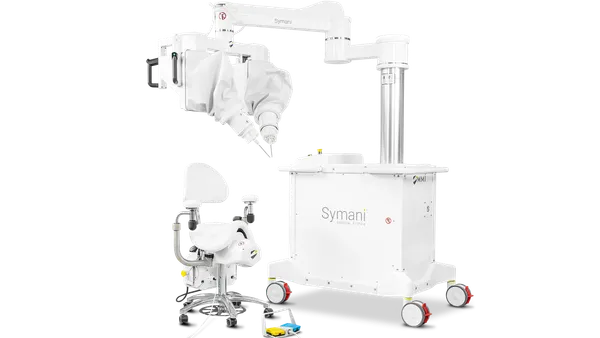Dive Brief:
- Boston Scientific’s modular cardiac rhythm management system met pre-specified safety and efficacy endpoints in a pivotal clinical trial, the company said Saturday at the Heart Rhythm Society annual meeting.
- The company designed the system, which consists of an implantable defibrillator and leadless pacemaker, for people who are at risk of sudden cardiac death from ventricular arrhythmias that existing subcutaneous implantable cardioverter-defibrillators (ICDs) are unable to treat.
- J.P. Morgan analysts said Boston Scientific reported “good results” and “solid” safety data, with the trial beating the performance goals for communication success and pacing thresholds.
Dive Insight:
Subcutaneous ICDs have overcome the lead-related complications associated with transvenous devices, according to Boston Scientific’s study that was simultaneously published in The New England Journal of Medicine. However, subcutaneous devices are unable to provide prolonged bradycardia or antitachycardia pacing therapy. The limitation means subcutaneous ICDs cannot be used in patients who require antitachycardia pacing to stop arrhythmias.
Boston Scientific responded to the problem by creating a modular cardiac rhythm management system. The system features a leadless pacemaker wirelessly connected to an ICD. The subcutaneous ICD communicates with the leadless pacemaker for antitachycardia pacing delivery.
To test the system, Boston Scientific enrolled 293 people who were at risk for sudden death caused by ventricular arrhythmias that could be terminated by antitachycardia pacing. The clinical trial met all its pre-specified six-month safety and effectiveness endpoints, as Boston Scientific reported in NEJM.
Boston Scientific said 97.5% of patients were free from leadless pacemaker-related major complications. Wireless-device communication was successful in 98.8% of tests, and 97.4% of patients had pacing thresholds in the target range. The results exceeded prespecified goals, causing the study to meet its two primary performance endpoints.
The system successfully terminated 61.3% of arrhythmia episodes by antitachycardia pacing. The authors of the NEJM paper said the result “appears similar to the 46 to 72% of pacing attempts that were shown to be successful in large trials of ICDs,” although performance differed in another area.
“Inappropriate shocks were delivered in 4.9% of patients, which is higher than the 2.1% at 6 months that was reported in a recent trial of a subcutaneous ICD,” the authors said. “Because most of the inappropriate shocks were delivered in response to slower ventricular arrhythmias, this finding may be attributable to patient selection and device programming.”
Boston Scientific expects to win Food and Drug Administration approval for the system in 2025.
Ken Stein, global chief medical officer at Boston Scientific, discussed the system and its potential to address a “big concern” people have had with implantable ICDs at an investor event last week.
“[It] gives people the ability to either do a staged procedure, start with the S-ICD, and if it turns out you need anti-tachycardia pacing, you can always get it later with this device and stay leadless. Or maybe for some patients, you can get both devices at the same time,” Stein said. “One of the big implications — if the data are positive and the device is approvable — will be what it does to unlock further growth with the S-ICD.”












